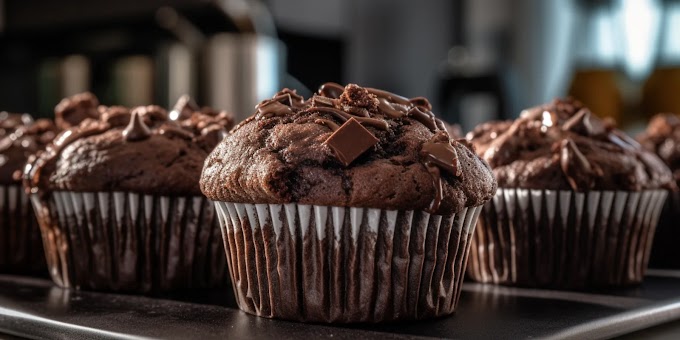Cooking a boneless top round roast can be a rewarding culinary experience, yielding a flavorful and tender dish that's perfect for family gatherings or a cozy dinner at home. This guide will walk you through the steps to prepare a delicious top round roast, along with tips for achieving the best results.
Understanding the Boneless Top Round Roast
Before diving into the cooking process, it's essential to understand what a boneless top round roast is. This cut of beef comes from the upper rear leg of the cow, known for being lean and relatively tough due to the minimal marbling of fat. However, when cooked correctly, it can be incredibly flavorful and tender. It's a versatile cut, suitable for roasting, slow cooking, or even slicing thin for sandwiches.
Ingredients Needed
For a classic boneless top round roast, you'll need the following ingredients:
Boneless top round roast (3-4 pounds)
Olive oil (2 tablespoons)
Garlic cloves (4-5, minced)
Fresh rosemary (2 tablespoons, chopped)
Fresh thyme (2 tablespoons, chopped)
Salt (2 teaspoons)
Black pepper (1 teaspoon)
Beef broth (2 cups)
Red wine (1 cup, optional)
Onions (2 large, sliced)
Carrots (4, cut into large chunks)
Potatoes (4, quartered)
Preparing the Roast
Step 1: Seasoning the Roast
Start by taking your boneless top round roast out of the refrigerator at least 30 minutes before cooking. This allows the meat to come to room temperature, ensuring even cooking.
While the roast is resting, prepare a seasoning rub. In a small bowl, combine the minced garlic, chopped rosemary, thyme, salt, and pepper. Mix these ingredients with the olive oil to form a paste.
Rub the seasoning mixture all over the roast, making sure to cover every inch. This step is crucial for infusing the meat with flavor. For an even more flavorful roast, you can prepare the rub a day in advance and let the roast marinate in the refrigerator overnight.
Step 2: Searing the Roast
Searing the roast is a key step in developing a rich, flavorful crust. Preheat a large skillet or cast-iron pan over medium-high heat. Add a tablespoon of olive oil to the pan and wait until it's shimmering.
Carefully place the roast in the hot pan, searing each side for about 3-4 minutes. The goal is to achieve a deep brown crust on all sides. This process not only locks in the juices but also adds depth to the flavor.
Cooking the Roast
Step 3: Roasting in the Oven
Preheat your oven to 325°F (163°C). Once the roast is seared, transfer it to a roasting pan. Surround the roast with the sliced onions, carrots, and potatoes. These vegetables will absorb the flavors from the meat, creating a delicious side dish.
Pour the beef broth and red wine (if using) into the roasting pan. This liquid will help keep the roast moist during cooking and can later be used to make a rich gravy.
Cover the roasting pan with aluminum foil, creating a tent over the roast to prevent it from drying out. Place the pan in the preheated oven and cook for about 20 minutes per pound. For a 3-4 pound roast, this will take approximately 1.5 to 2 hours.
Step 4: Checking for Doneness
The internal temperature of the roast is the most accurate way to determine doneness. Use a meat thermometer to check the temperature at the thickest part of the roast. For a medium-rare roast, the thermometer should read 135°F (57°C). For medium, aim for 145°F (63°C), and for medium-well, 150°F (66°C).
Once the roast reaches your desired doneness, remove it from the oven and let it rest for at least 15-20 minutes. Resting allows the juices to redistribute throughout the meat, ensuring every bite is moist and flavorful.
Serving the Roast
Step 5: Slicing and Plating
When the roast has rested, it's time to slice it. Use a sharp carving knife to cut thin slices against the grain. Slicing against the grain shortens the muscle fibers, making the meat more tender and easier to chew.
Arrange the slices on a platter, surrounded by the roasted vegetables. If you want to make a gravy, pour the pan juices into a small saucepan and simmer until slightly thickened. You can also add a tablespoon of flour or cornstarch to help thicken the gravy further.
Tips for a Perfect Boneless Top Round Roast
Choosing the Right Cut: Ensure you're buying a top round roast with a uniform shape. This promotes even cooking and makes it easier to slice.
Resting the Meat: Always let the roast rest after cooking. Skipping this step can result in dry meat as the juices will run out when sliced.
Using a Meat Thermometer: To avoid overcooking, rely on a meat thermometer rather than time alone. This ensures you hit the exact level of doneness you prefer.
Marinating for Extra Flavor: If you have time, marinate the roast overnight with the seasoning rub. This allows the flavors to penetrate deeper into the meat.
Slow Cooking Option: If you prefer a more hands-off approach, consider cooking the roast in a slow cooker. Sear the meat first, then cook on lowfor 8 hours with the vegetables and broth. This method yields a tender, pull-apart roast.
Making Leftovers Last: Boneless top round roast makes excellent leftovers. Use the cold slices in sandwiches or salads, or reheat gently in the oven covered with foil.
Conclusion
Cooking a boneless top round roast is a straightforward process that yields a delicious and satisfying meal. With the right seasoning, careful cooking, and proper resting, you can turn this lean cut of beef into a tender and flavorful dish that will impress your family and guests. Whether you serve it with classic roasted vegetables or use it as the centerpiece of a more elaborate meal, a well-cooked top round roast is sure to be a hit. Happy cooking!








Social Plugin